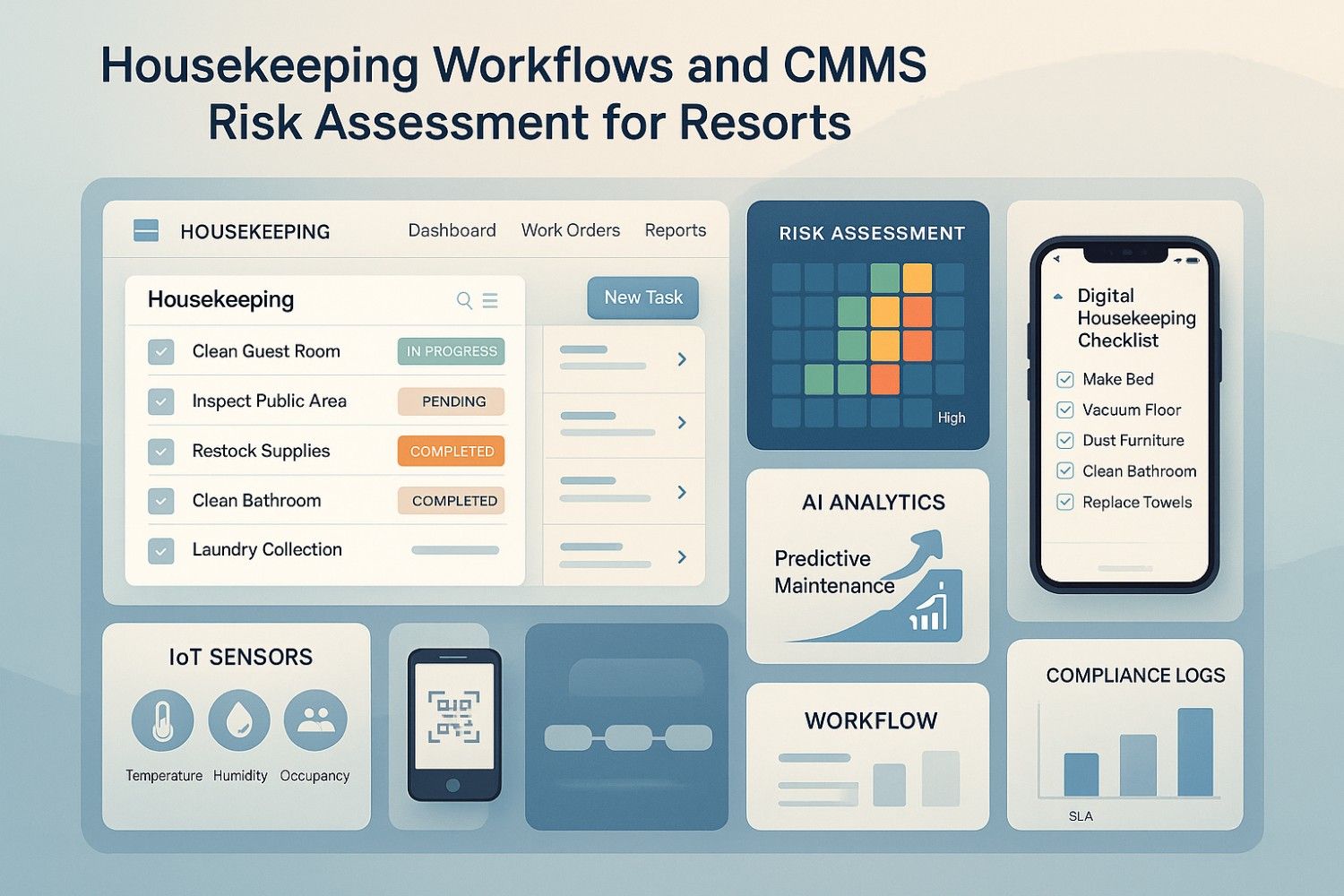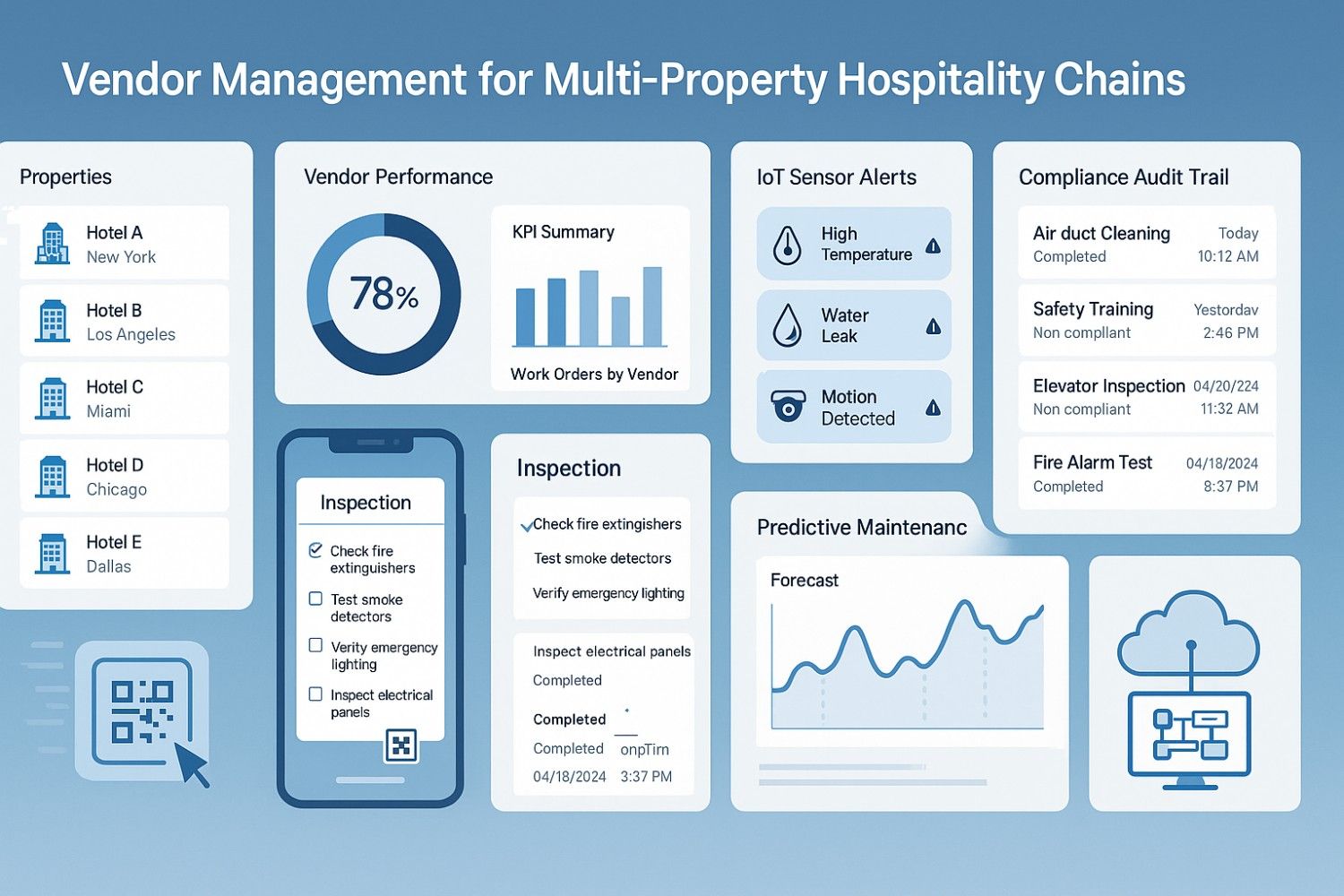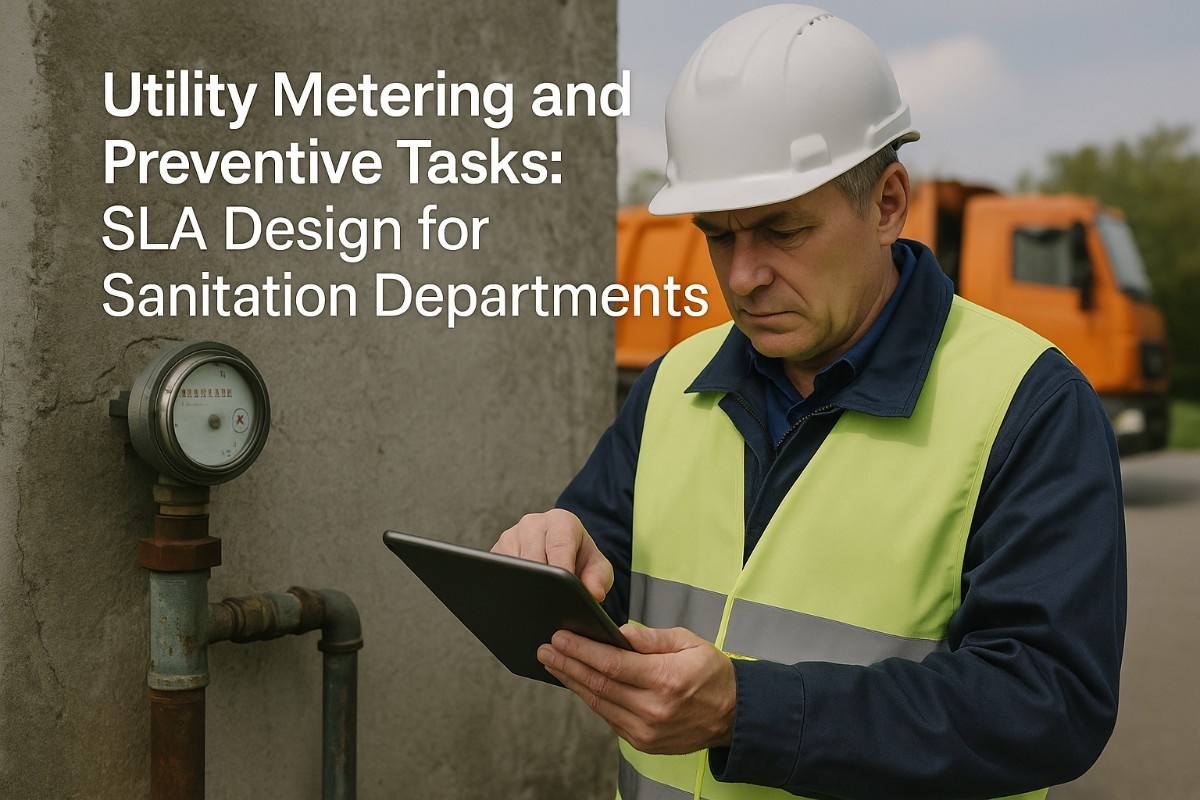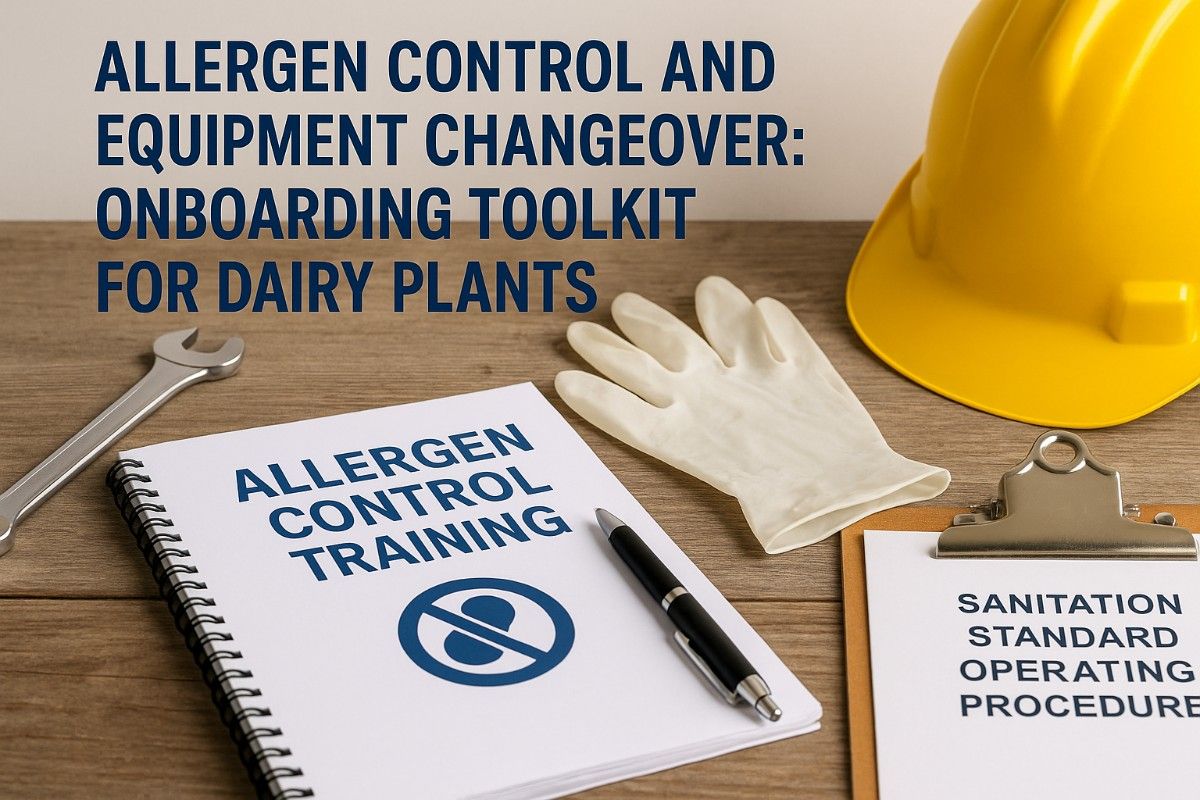The food manufacturing industry demands the highest standards of operational excellence, regulatory compliance, and quality control. As we advance into 2025, selecting the right Computerized Maintenance Management System (CMMS) has become critical for food manufacturers seeking to optimize production efficiency, ensure food safety compliance, and maintain competitive advantage. Modern food manufacturing software must seamlessly integrate maintenance management with quality control, inventory tracking, and regulatory reporting to meet the stringent demands of FDA regulations, HACCP protocols, and evolving food safety standards.
This comprehensive guide examines the leading food manufacturing CMMS features available in 2025, evaluating each system based on industry-specific features, regulatory compliance capabilities, integration with food manufacturing ERP systems, and overall value proposition. Whether you're managing a small food processing facility or a large-scale production operation, understanding the key differences between manufacturing software solutions will help you make an informed decision that drives operational excellence and ensures long-term success in the competitive food industry landscape.
Why Food Manufacturing Requires Specialized CMMS Software
Food manufacturing operations face unique challenges that set them apart from other industrial sectors. The combination of strict regulatory requirements, food safety protocols, traceability demands, and quality control standards requires manufacturing software that goes beyond basic maintenance management to encompass comprehensive production management and compliance monitoring.
Critical Requirements for Food Manufacturing CMMS
- Regulatory Compliance Management: FDA, USDA, and HACCP compliance tracking with automated reporting capabilities
- Food Safety Integration: Maintenance procedures that align with food safety protocols and contamination prevention
- Traceability and Documentation: Complete audit trails for regulatory inspections and recall procedures
- Temperature and Environmental Monitoring: Real-time tracking of critical control points and environmental conditions
- Sanitation Management: Specialized cleaning and sanitization scheduling with verification procedures
- Quality Control Integration: Seamless connection with quality management systems and testing protocols
- Allergen Management: Maintenance considerations for allergen control and cross-contamination prevention
- Supply Chain Integration: Connection with inventory management and supplier quality systems
Essential Features in Food Manufacturing CMMS Software
Core Maintenance Management Capabilities
The best food manufacturing software combines traditional CMMS functionality with industry-specific features designed to address the unique needs of food production environments. These systems must support both reactive and preventive maintenance while ensuring all activities comply with food safety regulations.
Work Order Management
- Priority-Based Scheduling: Automated work order creation and prioritization based on production schedules and food safety requirements
- Mobile Accessibility: Real-time work order management via mobile devices for technicians working throughout production facilities
- Approval Workflows: Multi-level approval processes for maintenance activities that may impact food safety
- Documentation Requirements: Comprehensive documentation capture including photos, notes, and completion verification
Preventive Maintenance Scheduling
- Condition-Based Maintenance: Scheduling based on equipment conditions, usage metrics, and operational parameters
- Regulatory Compliance Scheduling: Automated scheduling for regulatory-required maintenance and inspections
- Production Integration: Maintenance scheduling that considers production schedules and minimize downtime
- Critical Control Points: Special attention to equipment affecting food safety and quality parameters
Food Industry-Specific Features
Compliance and Regulatory Management
Food manufacturing CMMS must include robust compliance management features that address federal, state, and local regulations governing food production, safety, and quality.
| Compliance Area | Key Requirements | CMMS Functionality |
|---|---|---|
| FDA Regulations | Equipment validation, change control, documentation | Automated documentation, audit trails, validation protocols |
| HACCP Compliance | Critical control point monitoring, corrective actions | Integrated monitoring, automated alerts, action tracking |
| USDA Requirements | Sanitation standards, equipment cleanliness | Sanitation scheduling, verification procedures, reporting |
| SQF/BRC Standards | Quality management, continuous improvement | Quality metrics tracking, performance analysis, reporting |
Quality Management Integration
- Statistical Process Control: Integration with quality control systems for real-time monitoring
- Corrective Action Tracking: Automated workflows for addressing quality issues and non-conformances
- Supplier Quality Management: Maintenance considerations for supplier-provided equipment and materials
- Product Recall Support: Maintenance records and traceability to support recall procedures
Key Evaluation Criteria
Functional Requirements Assessment
| Evaluation Category | Key Considerations | Weight in Decision |
|---|---|---|
| Food Safety Compliance | FDA, HACCP, USDA compliance tools and reporting | Critical |
| Integration Capabilities | ERP, QMS, and production system connectivity | High |
| Traceability and Documentation | Audit trail completeness and regulatory reporting | Critical |
| User Experience | Ease of use, mobile access, and training requirements | High |
| Scalability | Ability to grow with business needs and locations | Medium |
| Total Cost of Ownership | Licensing, implementation, and ongoing costs | High |
Implementation and Integration Considerations
System Integration Requirements
Modern food manufacturing operations rely on multiple software systems working together seamlessly. The chosen CMMS must integrate effectively with existing manufacturing ERP systems, quality management software, and production planning tools.
- Manufacturing ERP Integration: Real-time data sharing with production planning, inventory management, and financial systems
- Quality Management Systems: Bi-directional integration with QMS for comprehensive quality and maintenance correlation
- Production Management Software: Coordination with production schedules and capacity planning systems
- Inventory Management Software: Integration for spare parts management and maintenance supply planning
- Business Intelligence Tools: Data connectivity for advanced analytics and performance reporting
Change Management and Training
Successful implementation requires comprehensive change management and training programs that address both technical system usage and food safety implications of maintenance procedures.
ROI and Business Benefits
Quantifiable Benefits
| Benefit Category | Typical Improvement | Annual Value (per $1M revenue) |
|---|---|---|
| Maintenance Cost Reduction | 25-35% decrease in total maintenance costs | $15,000 - $25,000 |
| Compliance Efficiency | 50-70% reduction in compliance preparation time | $8,000 - $15,000 |
| Equipment Uptime | 15-25% improvement in overall equipment effectiveness | $20,000 - $35,000 |
| Energy Efficiency | 10-20% reduction in energy consumption | $5,000 - $12,000 |
| Quality Improvements | 30-50% reduction in quality-related issues | $10,000 - $20,000 |
Risk Mitigation Benefits
- Regulatory Compliance: Reduced risk of FDA violations and associated penalties
- Product Recalls: Better traceability and documentation to minimize recall impact
- Food Safety Incidents: Proactive maintenance to prevent contamination and safety issues
- Business Continuity: Improved equipment reliability and reduced unexpected downtime
Implementation Best Practices
Phase-Based Implementation Approach
Phase 1: Foundation (Months 1-3)
- System setup and initial configuration
- Master data creation and validation
- Basic user training and change management
- Core functionality testing and validation
Phase 2: Core Operations (Months 4-6)
- Work order management implementation
- Preventive maintenance scheduling
- Mobile application deployment
- Basic reporting and analytics setup
Phase 3: Advanced Features (Months 7-9)
- Compliance management configuration
- System integrations with ERP and QMS
- Advanced analytics and reporting
- Process optimization and refinement
Phase 4: Optimization (Months 10-12)
- Performance monitoring and optimization
- Advanced feature adoption
- Continuous improvement processes
- ROI measurement and validation
Future Trends in Food Manufacturing CMMS
Emerging Technologies
- Artificial Intelligence and Machine Learning: Predictive maintenance capabilities and intelligent scheduling optimization
- Internet of Things (IoT) Integration: Real-time equipment monitoring and condition-based maintenance
- Blockchain Technology: Enhanced traceability and supply chain transparency
- Augmented Reality: Enhanced maintenance procedures and remote assistance capabilities
- Cloud-Native Architectures: Improved scalability, flexibility, and integration capabilities
Regulatory Evolution
Food manufacturing CMMS software continues to evolve in response to changing regulatory requirements, including enhanced food safety modernization act compliance, supply chain transparency demands, and evolving quality standards.
Frequently Asked Questions (FAQs)
What makes food manufacturing CMMS different from general maintenance software?
Food manufacturing CMMS software includes specialized features for regulatory compliance (FDA, USDA, HACCP), food safety management, traceability requirements, and quality control integration. Unlike general maintenance software, food-specific solutions provide built-in compliance templates, sanitation scheduling, allergen management capabilities, and audit trail documentation suitable for regulatory inspections. They also integrate with quality management systems and support food safety protocols that are critical in food production environments.
How much should food manufacturers budget for CMMS software implementation?
CMMS software costs for food manufacturing typically range from $25-150 per user per month for software licensing, with implementation costs adding 50-150% of first-year licensing fees. Small facilities might invest $50,000-150,000 total, while large operations could spend $200,000-500,000+ for comprehensive implementations. However, most food manufacturers achieve ROI within 12-24 months through maintenance cost reductions, improved compliance efficiency, and reduced downtime. Consider both direct software costs and change management investments.
Which CMMS features are most critical for FDA compliance in food manufacturing?
Critical FDA compliance features include automated documentation and audit trails, equipment validation tracking, change control management, electronic signatures, calibration management, and comprehensive reporting capabilities. The system must maintain complete records of all maintenance activities including personnel, timing, materials used, and verification procedures. Integration with quality management systems, corrective action tracking, and regulatory reporting automation are also essential for maintaining FDA compliance and supporting regulatory inspections.
How does food manufacturing CMMS integrate with existing ERP and production systems?
Modern food manufacturing CMMS integrates with ERP systems through APIs and real-time data synchronization, enabling seamless information sharing between maintenance, production, inventory, and quality management modules. Integration typically includes work order coordination with production schedules, parts inventory management, cost tracking and allocation, and performance data sharing. This eliminates data silos, improves decision-making, and provides comprehensive visibility across all manufacturing operations while maintaining data accuracy and consistency.
What are the key differences between cloud-based and on-premise CMMS for food manufacturing?
Cloud-based CMMS offers advantages including lower upfront costs, automatic updates, scalability, and remote accessibility, making it ideal for multi-location operations and growing businesses. On-premise solutions provide greater control over data security, customization capabilities, and integration with legacy systems, which may be preferred by larger manufacturers with specific compliance requirements. Cloud solutions typically offer faster implementation and lower total cost of ownership, while on-premise systems may be necessary for organizations with strict data sovereignty requirements or complex integration needs.
How long does it typically take to implement CMMS in a food manufacturing facility?
Implementation timelines vary significantly based on system complexity, facility size, and integration requirements. Basic implementations for small facilities might complete in 2-4 months, while comprehensive enterprise deployments can take 9-18 months. Factors affecting timeline include data migration complexity, integration with existing systems, customization requirements, user training needs, and change management complexity. Phased implementations often provide the best balance of functionality delivery and risk management, allowing organizations to realize benefits incrementally while minimizing operational disruption.
What training is required for food manufacturing CMMS users?
Training requirements include both software functionality and food safety implications of maintenance procedures. Basic users need 4-8 hours of system training covering work order management, mobile applications, and basic reporting. Supervisors and administrators require 16-24 hours covering advanced features, compliance management, and system administration. Specialized training for maintenance technicians should address how maintenance activities impact food safety, quality, and compliance requirements. Ongoing training and refresher sessions are essential as software capabilities expand and regulatory requirements evolve.
How can food manufacturers measure ROI from CMMS implementation?
ROI measurement should include quantifiable benefits such as reduced maintenance costs (typically 25-35% improvement), decreased equipment downtime, improved compliance efficiency, energy savings, and labor productivity gains. Track key performance indicators including mean time between failures, planned vs. reactive maintenance ratios, compliance audit performance, overall equipment effectiveness (OEE), and total maintenance costs. Most food manufacturers achieve positive ROI within 12-24 months through operational improvements, reduced emergency repairs, improved equipment reliability, and enhanced regulatory compliance efficiency.
What should food manufacturers consider when evaluating CMMS vendors?
Key evaluation criteria include food industry experience, regulatory compliance capabilities, integration options with existing systems, scalability for future growth, total cost of ownership, implementation support quality, and customer references from similar food manufacturing operations. Vendors should demonstrate deep understanding of food safety requirements, provide comprehensive compliance reporting tools, offer robust training and support services, and have proven track records with food manufacturers. Request demonstrations with food-specific scenarios and speak with existing customers in similar market segments.
How do mobile capabilities enhance food manufacturing maintenance operations?
Mobile CMMS capabilities enable real-time work order management, on-site data entry with photos and notes, immediate access to maintenance procedures and equipment history, and instant communication between technicians and supervisors. This is particularly valuable in food manufacturing where technicians need quick access to sanitation procedures, safety protocols, and compliance requirements while working throughout production areas. Mobile access improves response times, enhances data accuracy, reduces paperwork, and enables better coordination between maintenance and production teams.
What compliance reporting capabilities should food manufacturing CMMS provide?
Essential compliance reporting includes FDA-required documentation, HACCP compliance reports, equipment qualification records, calibration tracking, maintenance procedure validation, preventive maintenance completion reports, and comprehensive audit trails. The system should generate reports suitable for regulatory inspections, internal audits, third-party certifications, and management reviews. Automated report generation reduces manual effort, ensures consistency, provides real-time compliance visibility, and supports continuous improvement initiatives while maintaining complete documentation for regulatory requirements.
How does predictive maintenance apply to food manufacturing equipment?
Predictive maintenance in food manufacturing uses sensors, data analytics, and machine learning to predict equipment failures before they occur. This is particularly valuable for critical equipment like refrigeration systems, packaging machinery, conveyors, and processing equipment where failures can impact food safety, quality, and production schedules. Advanced CMMS solutions integrate with IoT sensors to monitor equipment conditions including vibration, temperature, pressure, and energy consumption, automatically generating maintenance work orders based on predictive analytics and reducing unplanned downtime by up to 70%.
What are the latest trends in food manufacturing CMMS technology?
Current trends include artificial intelligence and machine learning for predictive maintenance and intelligent scheduling, IoT integration for real-time equipment monitoring, cloud-native architectures for improved scalability and integration, mobile-first design for enhanced user experience, and advanced analytics for performance optimization. Emerging technologies include augmented reality for maintenance procedures, blockchain for enhanced traceability, and automated compliance monitoring. These technologies enable more proactive maintenance strategies, improved efficiency, and better regulatory compliance while reducing costs and enhancing food safety outcomes.
Conclusion
Selecting the best food manufacturing CMMS software for 2025 requires careful evaluation of industry-specific requirements, regulatory compliance needs, integration capabilities, and long-term business objectives. The right manufacturing software solution will transform maintenance operations from reactive to proactive, enhance regulatory compliance, improve equipment reliability, and drive significant operational improvements.
Success in food manufacturing CMMS implementation depends on choosing software that aligns with your specific operational needs, provides comprehensive food safety and compliance capabilities, integrates effectively with existing systems, and supports future growth. Whether you're managing a small food processing operation or a large-scale manufacturing enterprise, investing in the right CMMS software will position your organization for sustained success in an increasingly competitive and regulated industry.
As food manufacturing continues to evolve with new technologies, regulatory requirements, and market demands, having a robust CMMS foundation will enable your organization to adapt, innovate, and maintain excellence in food safety, quality, and operational performance. The investment in proper maintenance management software will deliver long-term value through improved efficiency, reduced costs, enhanced compliance, and strengthened competitive position in the dynamic food manufacturing landscape.
Ready to Elevate Your Food Manufacturing Operations?
STake control of your maintenance, compliance, and production efficiency with the right CMMS built for food manufacturers.









